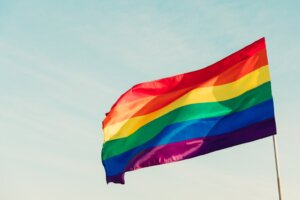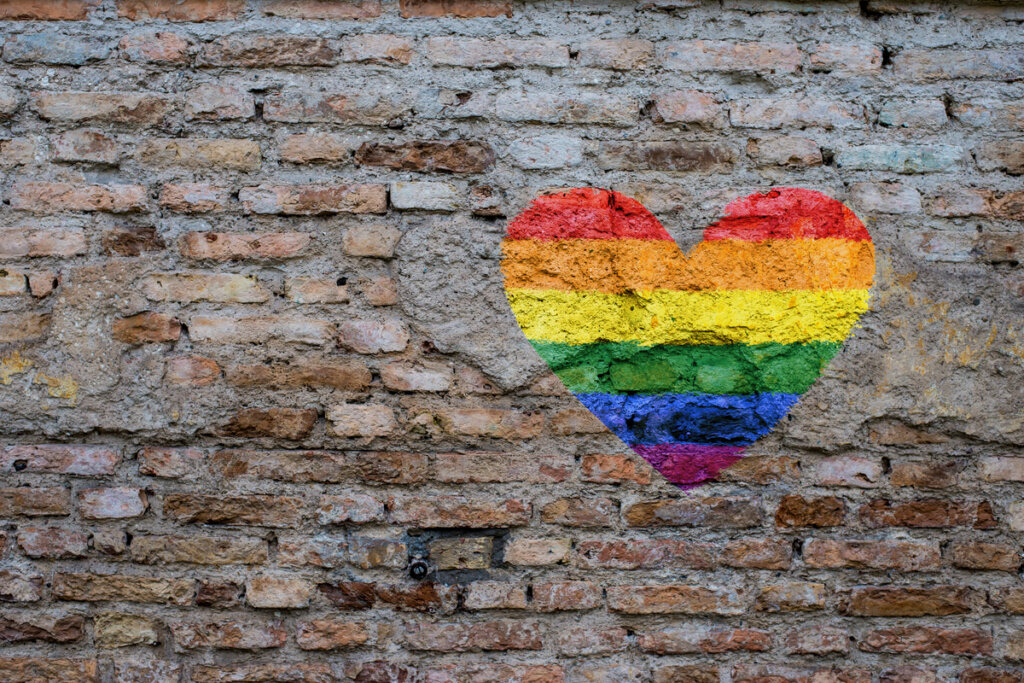The LGBTIQ+ Movement: What is it and How Did it Start?

If you look closely, heterosexuality as a norm seems to be more of a myth than a reality. That’s because, through art, literature, and historical testimonies we’re able to trace the presence of dissident sexualities. People who were persecuted and outlawed, and forced to live in the darkness of the closet.
The LGBTIQ + movement has taken this historical discrimination and transformed it into a political struggle. Their aim is for this section of the population to have the right to exist on their own terms. In fact, to be able to love freely.
The story of LGBTIQ+ is the story of many stories. That’s because, in each country in the Western world, the struggles, achievements, and transformations achieved by the movement have all been different. However, it’s a story that’s collectively articulated around the qualities of love, resistance, and, above all, pride.

Stonewall: the founding milestone
The date was June 28, 1969. The riots that occurred this day at the Stonewall Inn, a bar located in New York’s Greenwich Village, can be seen as a historic turning point in terms of sexual diversity.
At this time, the civil rights movement and women’s liberation movements proved a perfect foundation for other social demands to take place. Therefore, in response to the continuous police raids and sieges of the gay community, on June 28, those at Stonewall decided to say enough was enough. The demonstrations and riots lasted three days. However, the most important thing was that the foundations were laid for what would ultimately be one of the most important political struggles of the second half of the 20th century.
Shortly after the Stonewall uprising, gay activist organizations such as the Gay Liberation Front and the Gay Activist Alliance appeared on the political scene. These organizations were fundamental for establishing the relevant clashes and disagreements on the part of the homosexual community. Furthermore, in recognizing their struggles regarding their different identities. Finally, to construct a political agenda that ensured that neither identity nor sexual orientation could be elements that ever justify discrimination, violence, and persecution.
A year later, on June 28, 1970, the first Gay Pride march was held in New York and Los Angeles. Gradually, the movement spread throughout the planet. Furthermore, this date became one to celebrate diversity and make the struggles of this segment of the population visible, as well as their achievements and outstanding demands.
LGBTIQ + a movement for diversity
Each of the letters that make up the acronym LGBTIQ + tells us both about sexual orientations and about different identity constructions around gender.
In the early days of the movement, the term “gay” seemed to encompass all expressions of sexual dissidence. However, it soon became clear that it was necessary to make visible the discrimination and the specific demands of each of the identities. These were those identities that, in the 70s, and even the 80s, were generically named as the gay community.
Thus, step by step, the acronym that we know today came into being:
- The L corresponds to lesbian sexual orientation. Women who are sexually and emotionally attracted to other women.
- The G stands for gay or homosexual sexual orientation. Men who feel sexually and emotionally attracted to other men.
- The B corresponds to bisexuality. This is understood as sexual and emotional attraction both toward people of the same gender and of a different gender than one’s own.
- The T signifies transsexual and transgender people. In other words, people who identify with a different gender than that assigned at birth.
- The I refers to intersex people. It seeks to describe those who were born with anatomical sexual characteristics that don’t match the typical expectations associated with the masculine or feminine. Thus, intersex is neither a gender identity nor a sexual orientation.
- The Q comes from the word queer. This is an umbrella term that groups all those non-binary identities, such as fluid gender or neutral gender.
- The + sign was recently added and refers to identities such as pansexuality and asexuality. In fact, all those who aren’t reflected in the letters that make up the acronym, but who live their lives outside the cisgender norm.

Pride: the importance of visibility
In 1978, artist and gay rights activist Gilbert Baker designed the iconic rainbow fabric we now recognize as the LGBTI + pride flag. Baker first waved his creation at that year’s Pride March in San Francisco. Since then, the flag has become an important symbol of sexual diversity.
Although Baker’s original design featured eight stripes, the current flag has six. On the flag, each color has an associated meaning. Red represents life. Orange symbolizes health and healing. Yellow refers to the rays of the sun. Green means nature. Blue signifies harmony and serenity. Finally, violet represents the spirit.
Nowadays, this flag flies in all manner of places, both on the streets and on social media. It’s a symbol of the path traveled up to now by the LGBTIQ + movement, the importance of visibility, and, of course, the need to persist in the fight for recognition and respect for sexual diversity.
If you look closely, heterosexuality as a norm seems to be more of a myth than a reality. That’s because, through art, literature, and historical testimonies we’re able to trace the presence of dissident sexualities. People who were persecuted and outlawed, and forced to live in the darkness of the closet.
The LGBTIQ + movement has taken this historical discrimination and transformed it into a political struggle. Their aim is for this section of the population to have the right to exist on their own terms. In fact, to be able to love freely.
The story of LGBTIQ+ is the story of many stories. That’s because, in each country in the Western world, the struggles, achievements, and transformations achieved by the movement have all been different. However, it’s a story that’s collectively articulated around the qualities of love, resistance, and, above all, pride.

Stonewall: the founding milestone
The date was June 28, 1969. The riots that occurred this day at the Stonewall Inn, a bar located in New York’s Greenwich Village, can be seen as a historic turning point in terms of sexual diversity.
At this time, the civil rights movement and women’s liberation movements proved a perfect foundation for other social demands to take place. Therefore, in response to the continuous police raids and sieges of the gay community, on June 28, those at Stonewall decided to say enough was enough. The demonstrations and riots lasted three days. However, the most important thing was that the foundations were laid for what would ultimately be one of the most important political struggles of the second half of the 20th century.
Shortly after the Stonewall uprising, gay activist organizations such as the Gay Liberation Front and the Gay Activist Alliance appeared on the political scene. These organizations were fundamental for establishing the relevant clashes and disagreements on the part of the homosexual community. Furthermore, in recognizing their struggles regarding their different identities. Finally, to construct a political agenda that ensured that neither identity nor sexual orientation could be elements that ever justify discrimination, violence, and persecution.
A year later, on June 28, 1970, the first Gay Pride march was held in New York and Los Angeles. Gradually, the movement spread throughout the planet. Furthermore, this date became one to celebrate diversity and make the struggles of this segment of the population visible, as well as their achievements and outstanding demands.
LGBTIQ + a movement for diversity
Each of the letters that make up the acronym LGBTIQ + tells us both about sexual orientations and about different identity constructions around gender.
In the early days of the movement, the term “gay” seemed to encompass all expressions of sexual dissidence. However, it soon became clear that it was necessary to make visible the discrimination and the specific demands of each of the identities. These were those identities that, in the 70s, and even the 80s, were generically named as the gay community.
Thus, step by step, the acronym that we know today came into being:
- The L corresponds to lesbian sexual orientation. Women who are sexually and emotionally attracted to other women.
- The G stands for gay or homosexual sexual orientation. Men who feel sexually and emotionally attracted to other men.
- The B corresponds to bisexuality. This is understood as sexual and emotional attraction both toward people of the same gender and of a different gender than one’s own.
- The T signifies transsexual and transgender people. In other words, people who identify with a different gender than that assigned at birth.
- The I refers to intersex people. It seeks to describe those who were born with anatomical sexual characteristics that don’t match the typical expectations associated with the masculine or feminine. Thus, intersex is neither a gender identity nor a sexual orientation.
- The Q comes from the word queer. This is an umbrella term that groups all those non-binary identities, such as fluid gender or neutral gender.
- The + sign was recently added and refers to identities such as pansexuality and asexuality. In fact, all those who aren’t reflected in the letters that make up the acronym, but who live their lives outside the cisgender norm.

Pride: the importance of visibility
In 1978, artist and gay rights activist Gilbert Baker designed the iconic rainbow fabric we now recognize as the LGBTI + pride flag. Baker first waved his creation at that year’s Pride March in San Francisco. Since then, the flag has become an important symbol of sexual diversity.
Although Baker’s original design featured eight stripes, the current flag has six. On the flag, each color has an associated meaning. Red represents life. Orange symbolizes health and healing. Yellow refers to the rays of the sun. Green means nature. Blue signifies harmony and serenity. Finally, violet represents the spirit.
Nowadays, this flag flies in all manner of places, both on the streets and on social media. It’s a symbol of the path traveled up to now by the LGBTIQ + movement, the importance of visibility, and, of course, the need to persist in the fight for recognition and respect for sexual diversity.
All cited sources were thoroughly reviewed by our team to ensure their quality, reliability, currency, and validity. The bibliography of this article was considered reliable and of academic or scientific accuracy.
- Butler, Judith (2006): Deshacer el género. Barcelona: Paidós.
- González García, Marta I. y Pérez Sedeño, Eulalia (2002): “Ciencia Tecnología y Género”. Número 2. (EneroAbril). Ciencia.
- Nieto Piñeroba, José Antonio (2008): Transexualidad, intersexualidad y dualidad de género. Barcelona: Bellaterra.
- Talburt, Susana, Steinberg, S.R. (eds.) (2005): Pensando queer, Sexualidad, cultura y educación. Barcelona, Graó.
This text is provided for informational purposes only and does not replace consultation with a professional. If in doubt, consult your specialist.







